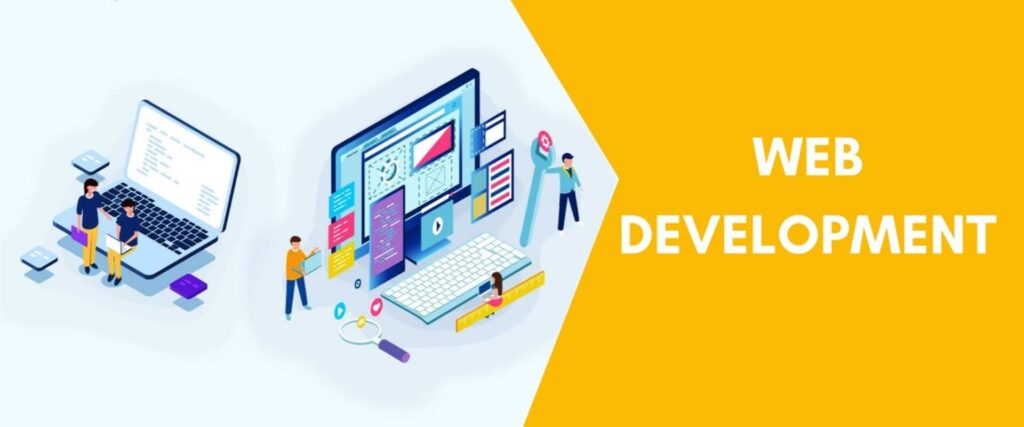
How Should You Select a Front-End Framework for Your Next Web Development Project?

Table of Contents
Are you about to start a new web development project and feeling overwhelmed by the number of front-end frameworks available? Don’t worry, you’re not alone! With so many options out there, it can be challenging to choose the right one for your needs. But fear not! In this blog post, we’ll guide you through the process of selecting a front-end framework that is perfect for your next web development project. We will explore different factors to consider before making your decision and provide some helpful tips on how to evaluate each option effectively. So let’s dive in and get started!
- What is a front-end framework?
A front-end framework is a JavaScript library that provides a structure for the user interface and interactions on a web page. It includes pre-built components and templates that can be reused to create a responsive, fast, and user-friendly web application.
There are many different front-end frameworks available, each with its own strengths and weaknesses. When choosing a front-end framework for your next web development project, it’s important to consider the specific needs of your project. Some factors to consider include the size and complexity of the project, the skills of your team, and the time frame for development.
The most popular front-end frameworks are React, Angular, and Vue. Each has its own pros and cons that should be considered when making a decision. React is a powerful framework that is easy to learn and use. However, it doesn’t provide as much built-in functionality as some of the other options. Angular is a full-featured framework that can be complex to learn and use. Vue is a lightweight framework that strikes a balance between power and ease of use.
No matter which front-end framework you choose, make sure you take the time to learn it thoroughly before starting your project. A good understanding of the framework will help ensure a successful outcome.
-
Why use a front-end framework?
There are a few key reasons to consider using a front-end framework for your next web development project.
First, front-end frameworks can save you a lot of time and effort in the development process. By providing a pre-built structure for your project, a front-end framework can help you avoid having to start from scratch. This can be especially helpful if you need to create a complex or responsive website.
Second, front-end frameworks can improve the quality of your code. By enforcing good coding practices and conventions, a front-end framework can help you write cleaner and more maintainable code. This is especially important if you are working on a team project where multiple developers will need to work with the same codebase.
Finally,front-end frameworks can make your website more consistent and polished. By using tried-and-tested design patterns and components, a front-end framework can help you create a high-quality website that looks great and works well for users.
-
How to select a front-end framework for your next web development project
With so many front-end frameworks available, it can be difficult to know which one to choose for your next web development project. Here are some things to consider when making your decision:
- The size and complexity of your project: If you’re working on a small, simple project, you probably don’t need a very robust framework. Something lightweight like Bootstrap might be a good option. For larger, more complex projects, you’ll want a framework with more features and functionality, like Angular or React.
- The skills of your team: Make sure you choose a framework that your team is comfortable with and has the necessary skills to work with. If you’re working with a smaller team or budget, it might not be realistic to choose one of the more complex frameworks.
- The time frame for your project: Some frameworks are faster to work with than others. If you’re under a tight deadline, you might want to choose a simpler framework so you can get your project completed on time.
- Your project’s requirements: Each framework has different capabilities and features. Choose one that offers the specific features and functionality you need for your project.
- Your personal preferences: Ultimately, the best front-end framework for your project is the one that you and your team are most comfortable with and that meets all of your project’s requirements.
-
The most popular front-end frameworks
There are a few front-end frameworks that are popular among web developers. AngularJS, ReactJS, and VueJS are all excellent choices for your next web development project. All three of these frameworks offer a great deal of flexibility and power. However, each one has its own unique strengths and weaknesses. You’ll need to evaluate your project’s needs before selecting the best framework for the job.
AngularJS is a full-featured framework that offers two-way data binding. This can be a great time saver when you’re working with complex data sets. However, AngularJS can be challenging to learn if you’re new to web development.
ReactJS is a lightweight framework that is easy to learn and use. It’s perfect for small projects or if you’re just getting started with front-end development. However, ReactJS doesn’t offer two-way data binding like AngularJS does.
VueJS is a versatile framework that strikes a balance between ease of use and functionality. It offers many of the same features as both AngularJS and ReactJS but is much easier to learn than either of those frameworks.
No matter which front-end framework you choose, you’ll be able to create an amazing website or web application. Just make sure to select the best tool for the job at hand!
Conclusion
Ultimately, the choice of a front-end framework for your web development project depends on your specific requirements and preferences. Carefully consider not only the features and capabilities of each available option but also how it fits into your development team’s skillset. With that said, we hope our advice has helped you make an informed decision when choosing which front-end framework to use for your next web development project.
Share Article:
Table of Contents


Effortless Inventory Control: Streamline Your Business with Our Customer-Centric Inventory Management Solution

Transform Your Online Presence with Premier Web Development Services in California


Related Articles

Navigating the Digital Classroom: The Future of Online Learning Management Systems

Effortless Inventory Control: Streamline Your Business with Our Customer-Centric Inventory Management Solution

